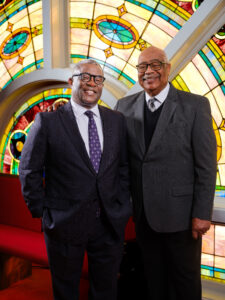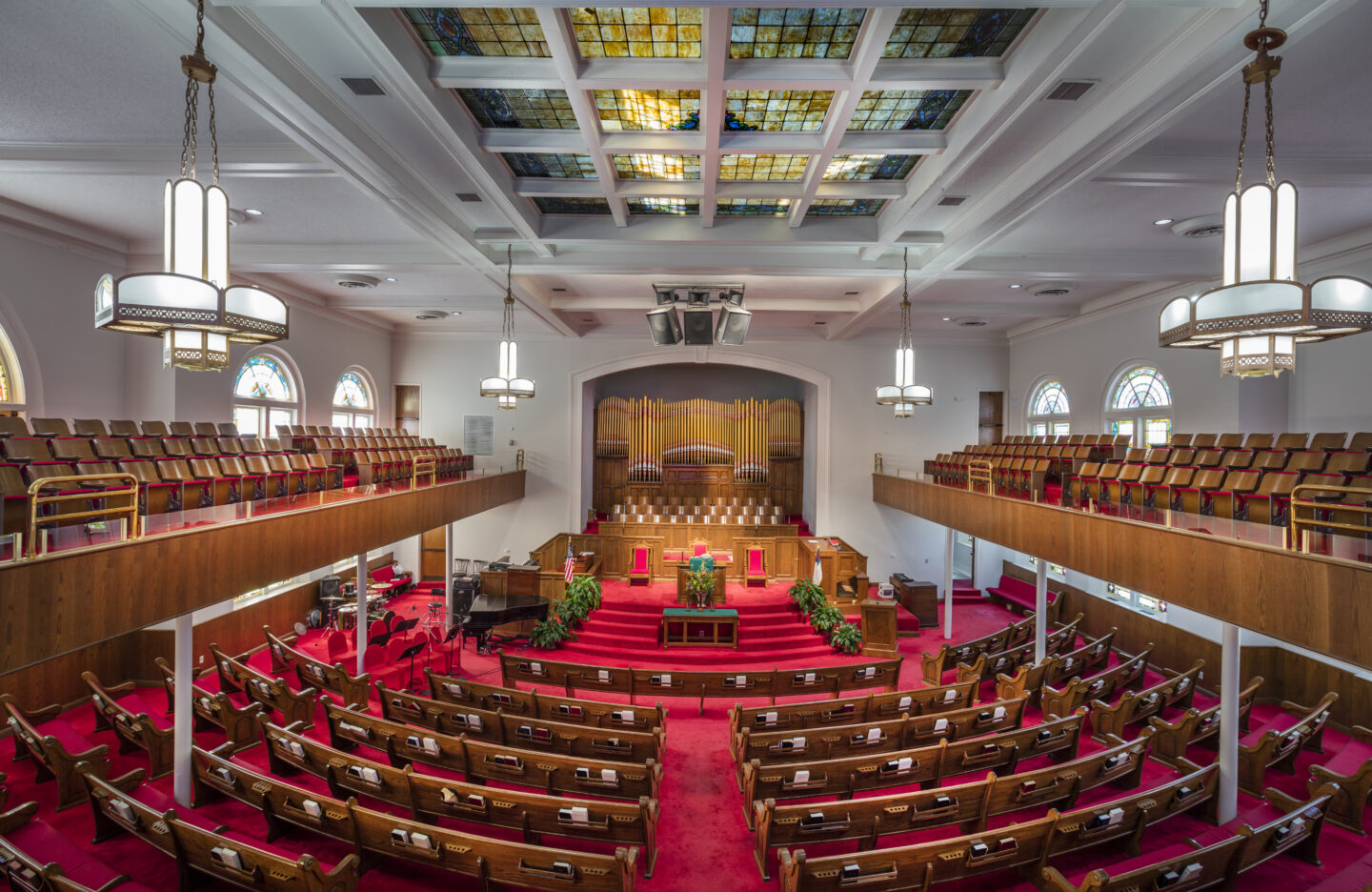An Iconic Church Inspires Remembrance and Resolve
We know Birmingham’s history. We’ve seen the 1960s black-and-white photos. But generations after the civil rights movement, it can be difficult to imagine the community we love as that same city of segregation, cruelty, and courage in the face of danger.
Then we visit Sixteenth Street Baptist Church.
The Rev. Arthur Price (LB ’13), the congregation’s pastor, has watched visitors’ eyes widen as their faces reflect shock and disbelief. Often they weep, overcome by the emotion and magnitude of the tragedy of September 15, 1963, when a bombing at the church killed four young girls preparing for Sunday school and injured more than 20 others. Seeing and moving through the space and hearing stories — many told by church members who experienced the historic events firsthand — brings “a 1963 context to a 2025 world,” Price says. “They feel the weight” of the struggles of the civil rights era.
That transformative experience is one reason why the church is a frequent stop for both Leadership Birmingham and Youth Leadership Birmingham classes, with many alumni calling it one of the most powerful, impactful visits of their program year. “It’s a symbol of strength, sacrifice, and suffering,” Price says. “It’s a place where souls were stirred, where systems were challenged. It’s a place that became a catalyst for change to make Birmingham better.”

Devotion to action
Sixteenth Street’s role as a sanctuary has always given people the confidence to open their hearts and minds without intimidation or judgment, says Ted Debro (LB ’93), a longtime church member who has chaired its board of trustees. The city’s first Black church, dating from 1873, Sixteenth Street became a focal point for civil rights activists throughout the 20th century. W.E.B. DuBois, Mary McLeod Bethune, Paul Robeson, and Ralph Bunche all spoke there. During the civil rights movement, the church hosted mass meetings — many led by the Rev. Martin Luther King Jr. and the Rev. Fred Shuttlesworth — to organize and plan protests.
Today the church continues that tradition by addressing current issues of equal access and equal treatment. Several ministries support local schools, underserved families, and people experiencing homelessness, and the church collaborates with Jefferson County’s drug court and family court to help offenders begin new chapters in their lives. In January, Sixteenth Street hosted Leadership Birmingham’s Economic Development Day, highlighting ways it and other predominantly Black churches connect people to job opportunities and training.
The congregation shares its unique story in a way that “moves people to make a commitment to make a difference,” says Debro, the retired community programs director for the Jefferson County Committee for Economic Opportunity. “The girls that were killed didn’t have the opportunity to make that choice; I think God made the choice for them to make a difference in the world. Now we have to pick up that mantle and make a difference, too.”
That message especially resonates with young people, Price says. “Our tour guides and members remind them that people in the movement were their age. That gets their attention . . . and sparks a sense of civil engagement to make an impact.”
Welcoming spirit
Price and Debro say the church’s dual role raises unusual challenges. The historic site attracting more than 100,000 visitors from around the world each year must coexist with the spiritual home for a congregation numbering about 300. Though conflicts sometimes occur, the congregation doesn’t view the church’s special legacy as a burden, Price says.
“We have been given a gift from God, and we have to share that gift with the world,” Debro adds. He emphasizes that the church is no museum, however. Instead, the tours and historical displays are part of a ministry — a “living sermon” that merges Bible quotes with Sixteenth Street stories, ultimately focusing on “a love that forgives,” the theme of the Sunday school lesson scheduled for September 15, 1963. “The message is that we must show compassion, that we have to forgive even death and the cruelties of the 1960s in order to move forward to a better world,” Debro says.
With the church constantly in use, preservation of the building — designed by pioneering Black architect Wallace Rayfield and opened in 1911 — is an ongoing concern. In recent years Debro and other members have led efforts to renovate the basement, where the four girls were when the bomb detonated, to better accommodate visitors and displays, along with restoring other parts of the structure. Grants from community partners, the National Park Service — the church is part of the Birmingham Civil Rights National Monument — and the National Trust for Historic Preservation have supported that work and helped launch an endowment to fund future preservation initiatives.
In 2024 the nonprofit Lilly Endowment presented Sixteenth Street with a $2.5 million grant to support preservation and the construction of an Education and Visitors Center. The new facility, located next door, will provide space for reflection and connection while alleviating stress on the historic building, Debro says. “After people have had the experience in the church—after they’ve gone through the horrors of 1963 — they will have an environment to sit down and dialogue with one another,” he explains. In the center’s restaurant, for example, visitors will gather at large tables for family-style dining and conversation. In the lobby, an interactive wall styled after the church’s stained glass will display personal commitments for change submitted by visitors.
Debro calls the church “sacred ground” — not only for its history but also because it kindles hope for a brighter tomorrow. The building and its stories connect the past to the present and offer a “starting point” for the future, he says.
“People see Sixteenth Street Baptist Church as a symbol of justice in the same way people see the Liberty Bell as a symbol of freedom,” Price adds. “We know what it means to take up that fight. We’ve been there before.”
This article was originally posted in the Leadership Birmingham Summer 2025 magazine. See the full magazine here.
